2017 Game of the Year
Man, 2017 huh? Let’s pretend I wrote a colorful paragraph here about the year in review so we can get on to talking about video games.
It feels universally accepted at this point that it was an incredible year for games. By spring, we were already inundated with instant classics. Whether or not that strength continued on throughout the year is maybe up to some debate but regardless, the list of games to cut down for making this list was quite large.
Honorable Mentions
A lot of great stuff that is either not released this year or that didn’t make the top 10.
- Steamworld Dig 2: A really wonderful non-procedural metroid-vania digger game on the Switch. Very quaint and surprising and relaxing. I need to go back to it and finish!
- Yakuza 0: I literally just started playing this yesterday and I really really really like it
- Stardew Valley: With the Switch out I finally broke down and put the 40 some odd hours into this that I always imagined I would eventually.
- Middle Earth: Shadow of War: Despite the controvery around this game I was definitely enjoying my time with it. Unfortunately much of what made me enjoy the first game eventually dried up and I found myself having a hard time to go back to it
- Trackmania 2: Lagoon: A new trackmania 2 entry to mend the heart broken by Turbo. Really enjoyed messing with the new tracks and car physics. The leaderboards being broken for the first few weeks really killed my momentum though!
- Elite Dangerous: Every year.
- Path of Exile: I got crazy into PoE this year and had a ton of fun. A very respectful Diablo 2 clone that innovates in exciting and interestingt ways. A way more numbers and spreadsheets focused loot game than Diablo 3!
- Dark Souls 3: I started over in this game and finally beat the stupid boss that broke me last year.
- Factorio: I also got way way back into Factorio this year and spent many weeks on it. An extremely fun and interesting city-building/pautomation-simulator.
NOW FOR THE ACTUAL LIST
10. The Nintendo Switch
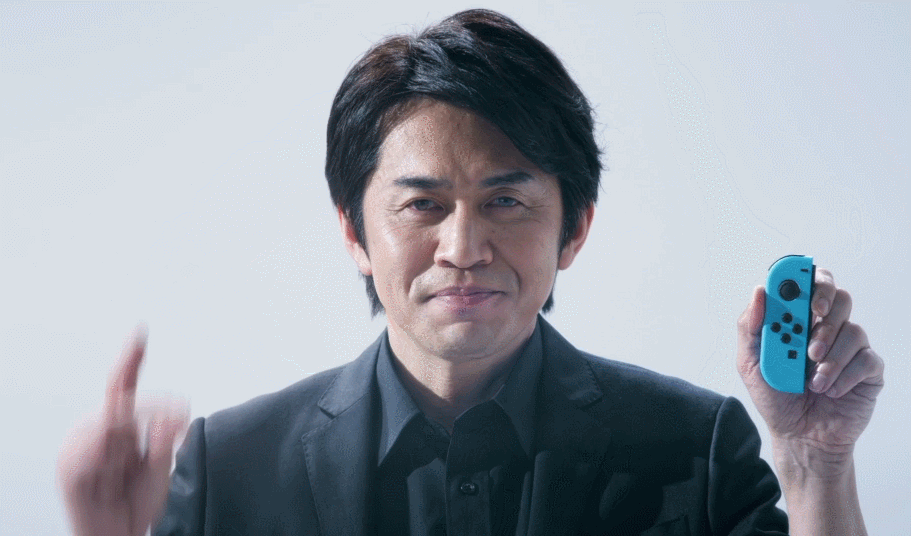
It’s certainly cheating to put this here.
When the name and details of the Switch dropped in January I was skeptical to say the least. It appeared to be a brand new Nintendo-ass gadget coming complete with an unheard-of design, motion controls, and a host of features no game will ever use in a meaningful way.
Aside from their flagship in the new Zelda, the Switch’s launch lineup was fairly laughable and the launched system revealed an overwhelming half-baked feeling. From a lack of online features to bad-tasting cartridges, it was extremely easy to dismiss the Switch entirely.
What I never expected in the Switch was for it to scratch a love for mobile gaming I’ve had since the Game Boy. The ability to put the system in handheld mode allowed me to kick my feet up and hangout with a wealth of great games without needing to tie up the television or sit at a desk. It was the promise of the ill-fated Vita in a way I didn’t think possible. Every time I open the Switch shop I find a list of PC indie titles being ported over and WiiU titles enhanced for a platform people actually own.
The phrase “I can’t wait for the Switch version of this” has been said of every damn game this year, it’s infectious!
9. Picross S
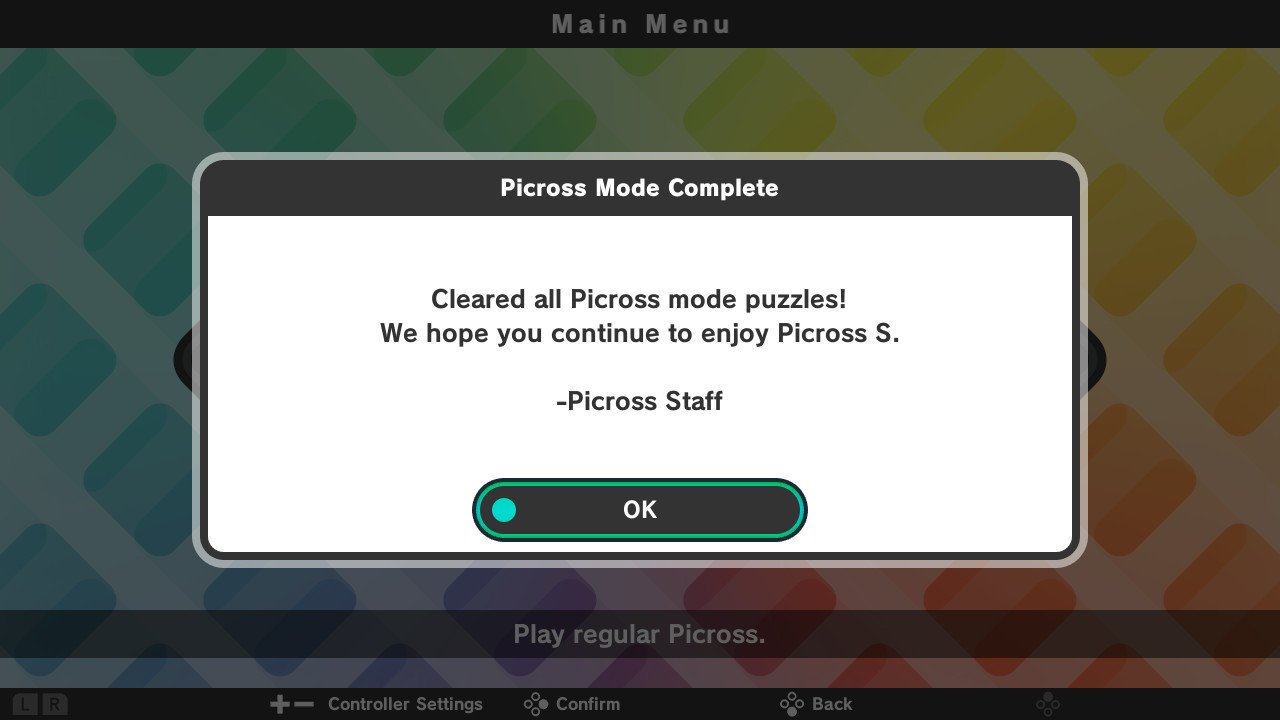
I love Picross.
I first played Picross DS in between calls while working tech support for Nintendo and have been an easy mark for new titles in the series ever since. The puzzles struck me as far more fun than anything like Sudoku ever was and it was a very simple and easy thing to play a little at a time. Picross S on the Switch is more of the same with one very unfortunate difference: no touch-screen support. Touch+Stylus is by far the most intutive and fun way to interface with Picross puzzles so not having that with S nearly turned me off.
It was the addition of the new “Mega Picross” which doubly complicated the old nonogram mechanics in an interesting way that rewired my brain. I also really enjoyed changes to how mistakes are handled which fixed some frustrating aspects of past entries. All in all Picross S was the nervous habit of the year; I could always pick it up and hack out one of its 300 puzzles.
In the end I played more hours of Picross this year than…
8. The Legend of Zelda™: Breath of the Wild
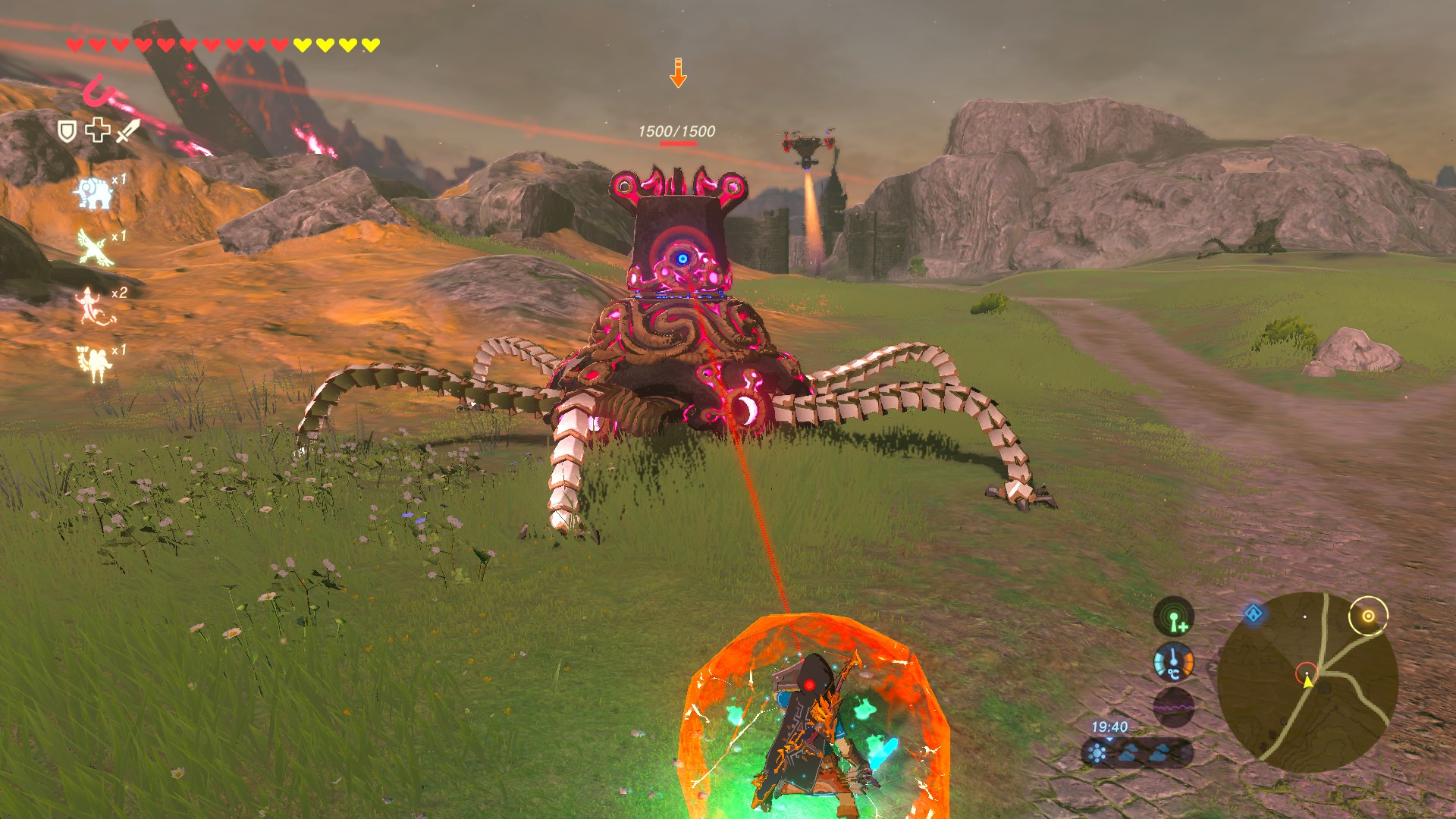
I played 55 hours of Zelda.
There’s no hiding that “BotW” is an exceptional game. I found the exploration and world traversal to be very relaxing and fun. Climbing and flying left me wishing it worked that way in every game. It was alarmingly easy to point myself at a mountain in the distance and find that it was suddenly 3 AM. Sadly however, a lot of what that game has going for it fell flat for me.
The characters were all incredibly well-written, expressive, and fun, but I wound up finding this tragic as no character ever has you interact with them for anything more than a single monotonous fetch quest. The combat in the game is abject garbage; fighting, dodging, locking on, switching weapons are all clunky, frustrating, and unfulfilling. Finally, the Zelda franchise has built a reputation for itself of having exciting, cinematic, scripted moments. These are fully absent from the latest entry. The story moments in the game I found to be very unfilfilling and, while I understand that this was largely intentionally replaced with hands-off generative storyteling, the lack of engaging scenes left the experience feeling empty.
Even though I’m completely incapable of talking about this game without airing a list of greivances, it absolutely earns a spot on this list.
I just wish I liked it more.
7. Splatoon 2
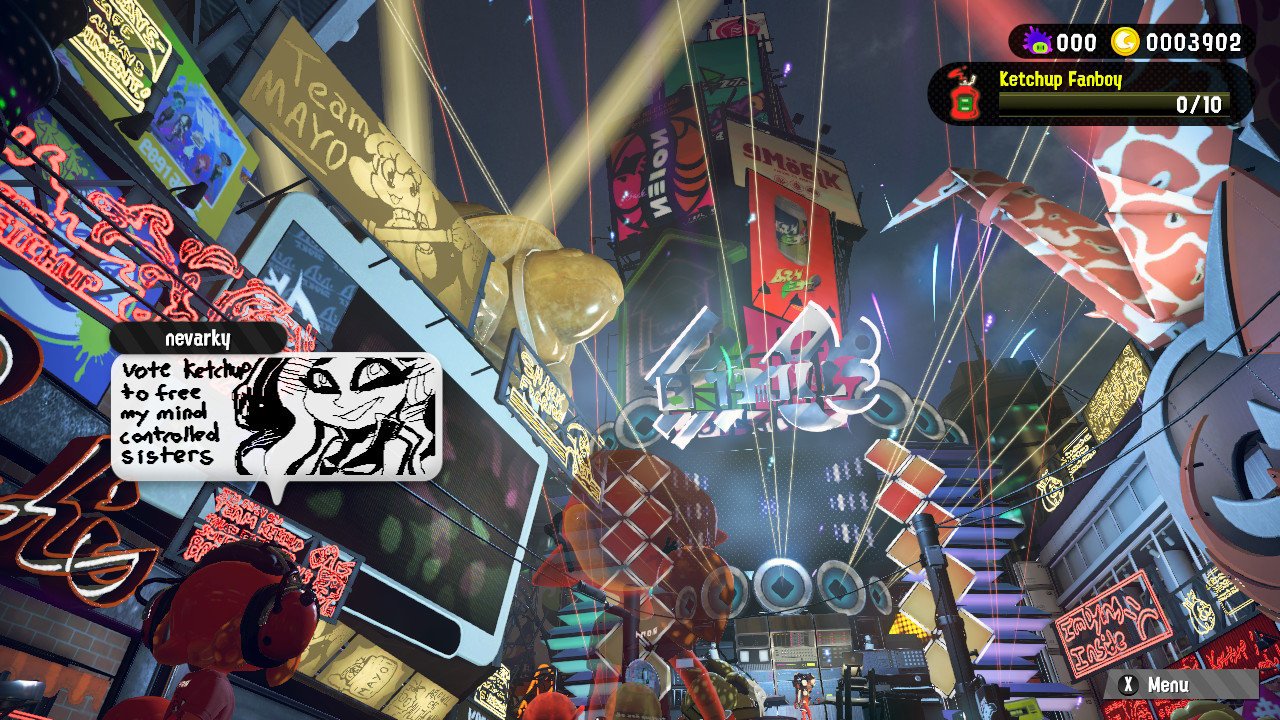
The Switch has been doing a neat thing this year and porting WiiU titles. It’s exciting because the WiiU was by several metrics a failure of a system. With the Switch selling out week over week, it is incredibly smart and exciting to get access to some games whose largest hindrance may have been a small install base.
Anyway, not related at all to any of that paragraph, Splatoon 2 is an entirely new game that has never been made before and it is very good.
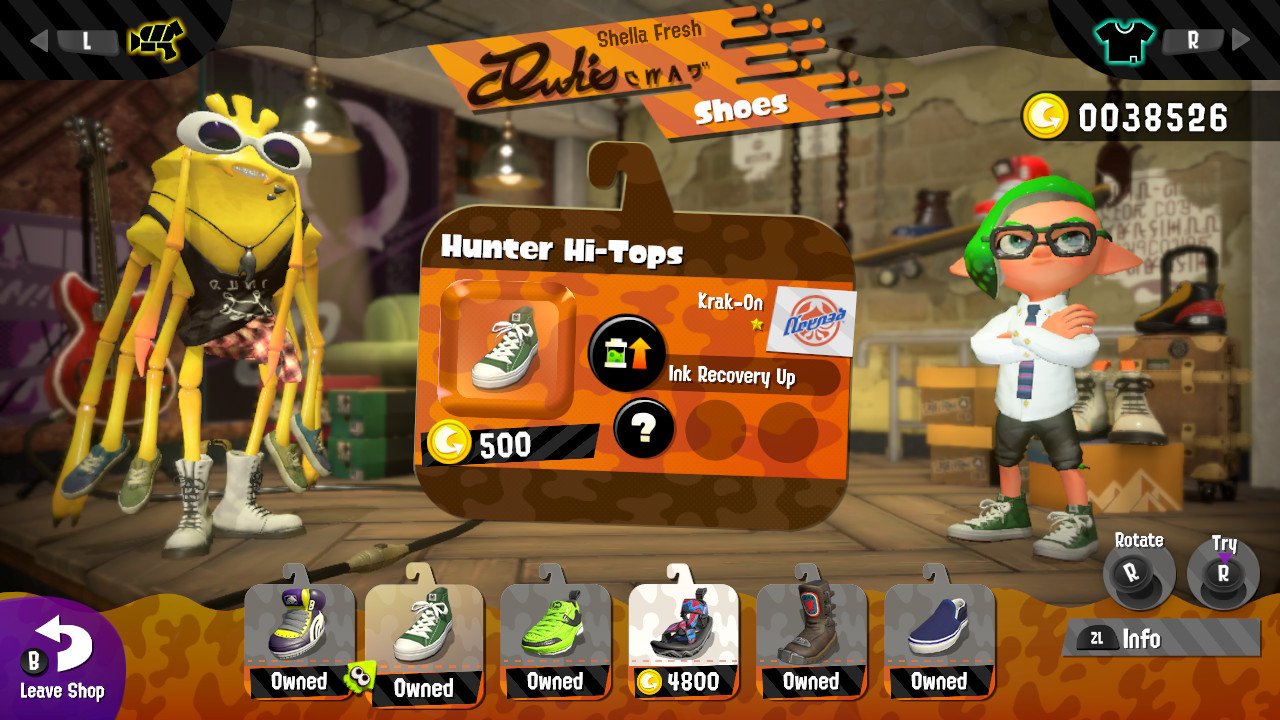 Splatoon is, in essence, a competitive multiplayer shooter with the hook being that you are shooting ink, not bullets. As the match goes on, you are painting the map in your team’s color. When the time is up, the winner is not the team with the most kills, it is the team that has covered the map with the most ink. It is a very simple and fun formula that comes down to the joy of making a mess. This core system is then complemented with an immense, overpowering sense of style. The “Squid Kids” are as much interested in fresh fuckin duds as they are in grinding match ranks.
Splatoon is, in essence, a competitive multiplayer shooter with the hook being that you are shooting ink, not bullets. As the match goes on, you are painting the map in your team’s color. When the time is up, the winner is not the team with the most kills, it is the team that has covered the map with the most ink. It is a very simple and fun formula that comes down to the joy of making a mess. This core system is then complemented with an immense, overpowering sense of style. The “Squid Kids” are as much interested in fresh fuckin duds as they are in grinding match ranks.
The music, writing, and color completely swept me off my feet. It feels mean to put this ahead of Zelda but I think I just had more fun with Splatoon.
6. PLAYERUNKNOWN’S BATTLEGROUNDS
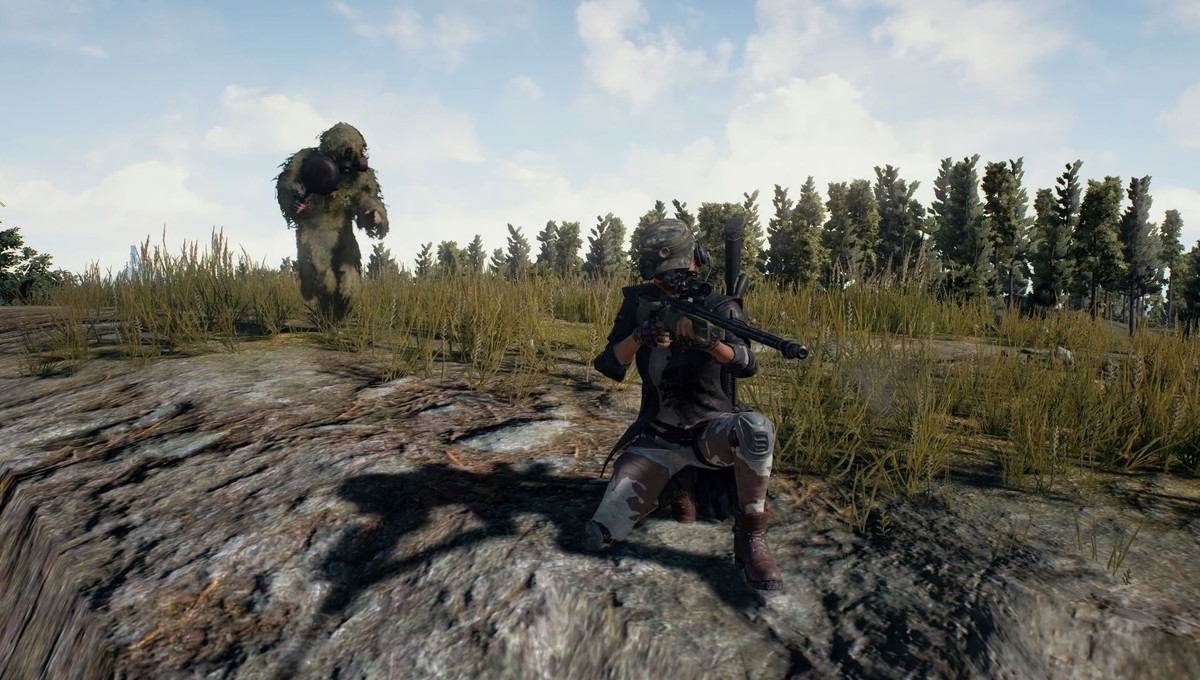
Where to start with PUBG. The road that lead to this game’s release was very long. The only thing that actually matters though is that this title knocked the industry on its ass.
The premise is inspired by the movie Battle Royale (Hunger Games is also similar). 100 human players are thrown out of a plane flying over an island. Once you hit the ground, you have the begin scurrying around the buildings looking for guns and equipment because only the final living player wins. After a few minutes, a circle appears on the map and everyone not in that circle will eventually begin taking damage. This circle continues to contract over the course of the match, forcing the players out of hiding holes and into a constantly-shrinking space.
With uninspired graphics, janky controls, and buggy net-code, it’s nothing less than profound how solidly the base idea was executed. At any given time, 1-3 million people are playing Battlegrounds.
Most of my experience with the game was in watching internet personalities I follow get hooked. This eventually lead to giving it a try myself and it was nothing short of exhillerating at times. In a lot of ways it is a horror game as you slowly pick through the map, with your head on a swivel, looking for fellow murderers out to get you.
Hiding in a bathtub for 20 minutes with a shotgun pointed at the door was more trilling than any traditional shooter I’ve played.
5. Destiny 2
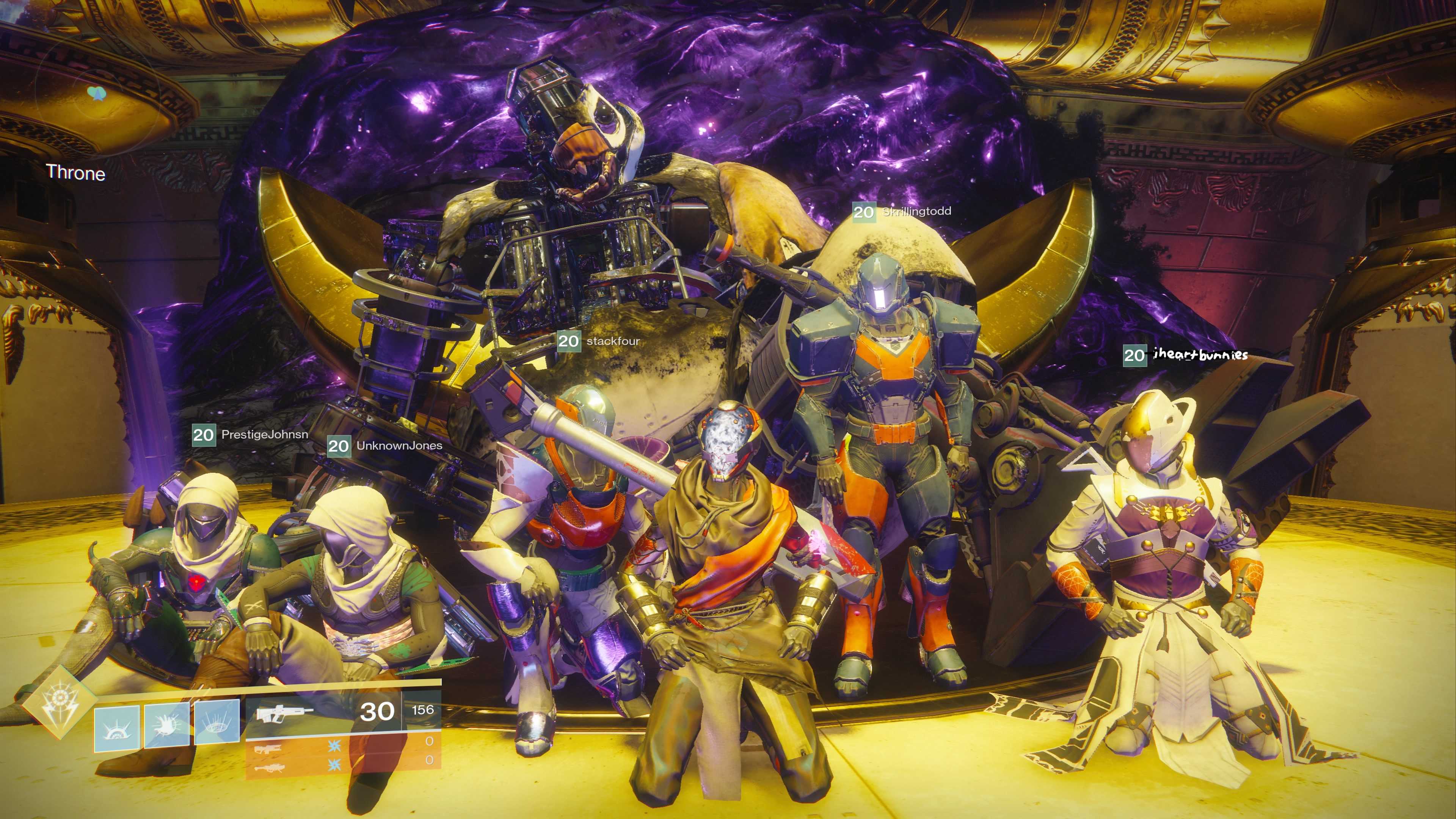
I could get into a long diatribe about Destiny and its history, but I’ll spare you in favor of talking about just how much fun I had with Destiny 2 this year.
Destiny is in some ways a genre all its own. It sells itself as an MMORPG and borrows heavily for things such as loot progression, encounter design, and clans. At its core I’d say it’s closer to the developer’s very famous Halo series. The game is a sci-fi shooter where the players are “Guardians” imbued with magic space powers that make them really good at shooting aliens. I find the world and lore of Destiny to be extremely cool, with players visiting far-future earth and the surrounding solar system. The events of the game take place thousands of years after humans have both experienced a golden age of technology and roman-empire’d it.
I generally dislike first-person shooters on consoles. I’m so used to having the control of a mouse and keyboard that being limited to an analog joystick is painful. Shockingly, I found the way the shooting and aiming is designed in Destiny to be intuitive, natural, and fucking great-feeling. It’s honestly a game design marvel.
The strongest asset of Destiny 2, however, was getting to enjoy it with some friends. Shout-out to all the destiny nerds that I got to hang out with for 110 hours across a month. Every night of the week I was logging in to find a place in a group to run the raid or the nightfall or just run around Nessus chatting. It made me nostalgic for the old World of Warcraft days but ultimately this game asked less of my time and was easier swallow.
Although I quickly ran out of content and reasons to keep playing, I cherish the time I had with it and look forward to hopefully jump back in in 2018 when more content is released.
4. Night in the Woods
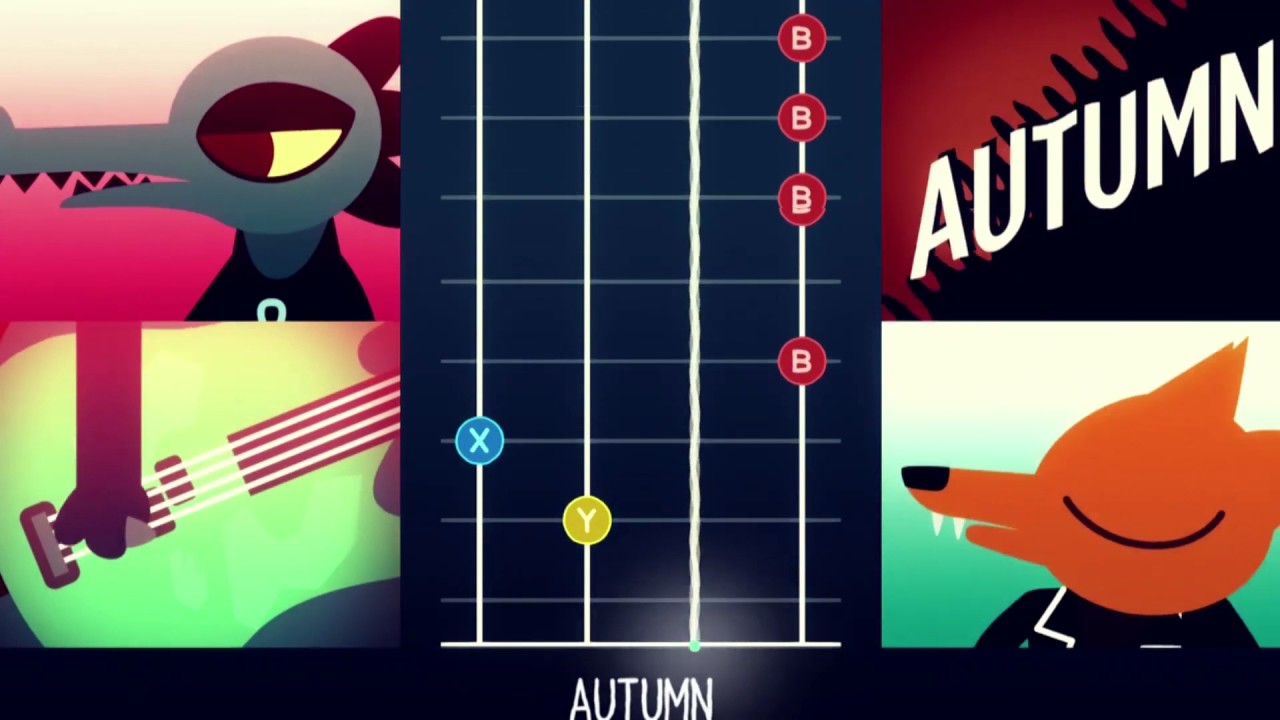
This is very small indie title that dropped early in the year, just ahead of some of the largest and most successful AAA launches in history. The art-style, music, and what appeared to be a guitar-hero-esque rhythm mini-game piqued my interest and I still had a week or two before Horizon came out, so I bit.
What I found in Night in the Woods is perhaps the finest character writing I have ever seen in a game.
The game is a narrative told through the medium of a simple 2D platformer. The protagonist, Mae, is a college dropout (and, inexplicably, also a cat) who returns to her home, a slowly-fading rust-belt town. With the circumstances of her dropping out of school remaining a mystery, Mae reunites with her family and friends left behind as she tries to figure out what to do with herself. Every morning, the player controls Mae and decides who of her friends to spend the day with. She might drop by the church to talk to mom, steal a pastry from the angry bakery owner to feed the rats she’s nursing in the attic of an abandoned office building, or go fill in for bass at band practice.
It’s all very quaint but what makes it come alive is the dialog. Every character sounds and feels like real people. Mae’s friend Gregg with the black leather jacket who runs the minimart, you have that friend. Mae’s mom is your mom. Mae corrects people who call her a kid (“adult!!!”) just the way a first year college kid would. The characters in Night in the Woods felt so believable that it made me nostalgic for being that age and having that perspective. It hit especially home for me because I, too, dropped out of college and moved back home. The game beautifully respresented that feeling of being utterly lost while still being surrounded by support and love.
I heartily recommend the title and wish more people played it.
3. Super Mario Odyssey

In some ways I was dreading this game. All the coverage made it look fun and a joy to play but I couldn’t shake the feeling that it just wouldn’t be for me. 3D platformers never really stuck with me. Between difficulty of judging distances for jumping and wrestling with camera controls, I generally find the genre to be frustrating and lackluster.
Odyssey took those fears, set them aside, and was the most fun I have ever had with a 3D Mario game.
I began writing a paragraph about the basic hook of the game but honestly it’s been written to death. It’s a Mario game. Save Peach. Beat Bowser. Oh also you have this hat this time. Traversing each new world was simply nothing short of a joy. The music, art, character designs, and environments all meshed perfectly together. Discovering the new ways to capture enemies to reach new areas was never tiresome. The story was fun, if not generic, and culminated in a final sequence that left me broken with laughter. Even after the credits there’s still a host of things left for me to find and discover.
One of the greatest achievements of the game is thoroughly rewarding exploration and player cleverness. That game is filled to bursting with the interaction of “Hmm I wonder if I can get up there,” doing so, and being showered with coins as a little nod from the developers “yeah, we thought of that.”
Odyssey was a wonderfully pleasant surprise and is definitely my favorite game released on the Switch this year.
2. Horizon: Zero Dawn
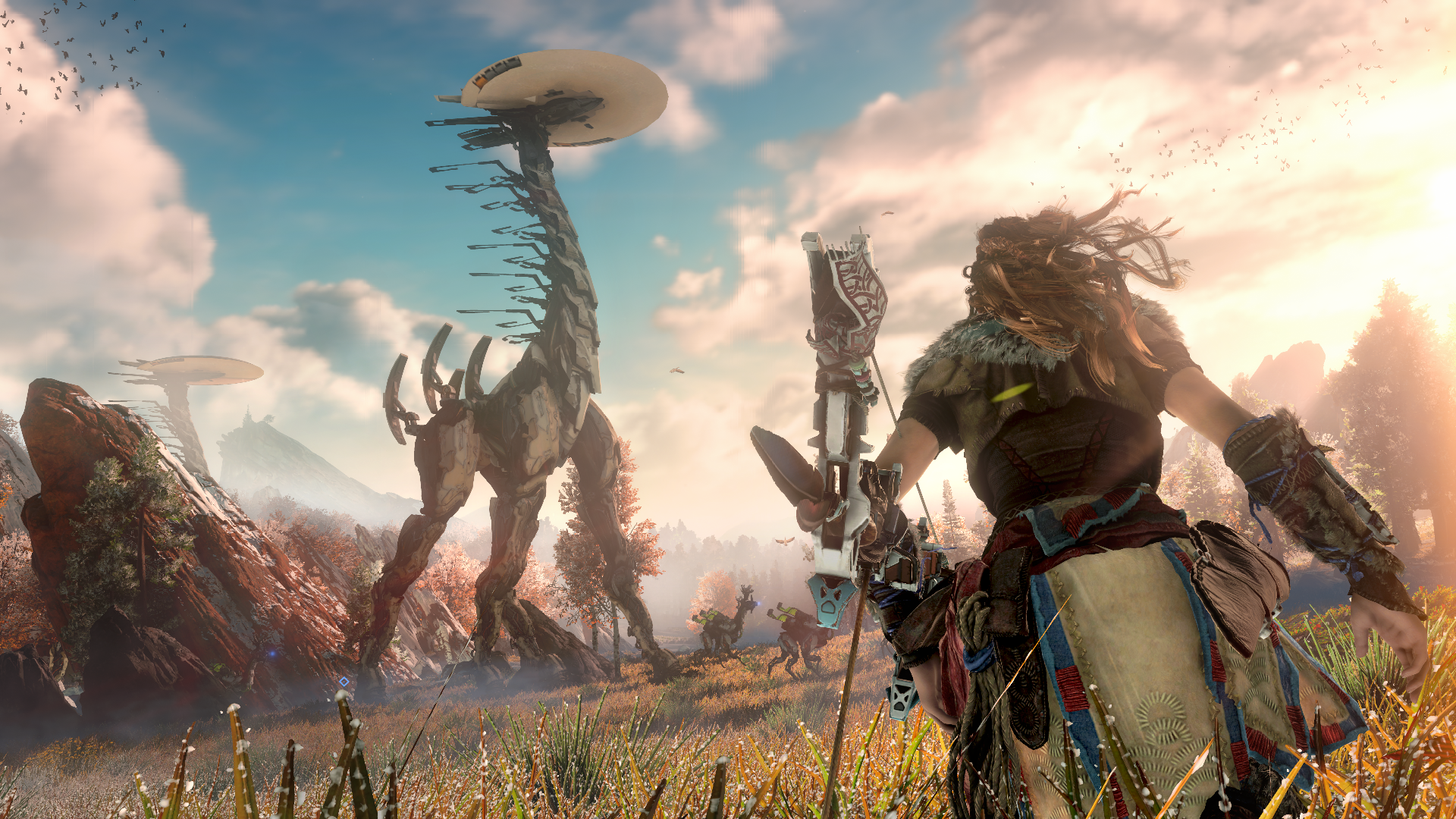
Ever since Horizon was announced at the 2015 E3, I’ve been on its hook. It pitched a “post-post-apocalypse” setting looking so far beyond the fall of civilization that the new denizens of the world view that past as ancient magic. Everything shown for that game, from the music to the beautiful power of the Decima engine, had me anxiously awaiting the title’s arrival.
When the game launched at the end of February, I have to admit that I was initially hesitant by its lack of innovation with the open world formula. The last half decade or more has seen the open world game resolved to a science by companies like Ubisoft. The main stays of the genre are all present in Horizon: a map filled with icons, endless side objectives, towers you climb to unlock more icons, and light crafting. On paper, the game failed to spark a lot of confidence for a games community long-tired of things like the FarCry series.
If that wasn’t enough, Horizon launched 3 days ahead of Zelda, an open world game thought by some to be the finest ever made. Breath of the Wild dared to break the open world mold everyone was used to and presented a weird, quirky, and fun Nintendo spin. Instead of getting icons on your map, you were climbing those towers to gaze through your telescope and make your own icons by marking things you see in the distance that look interesting to you. Zelda took a genre that could easily be reduced to “completing long check-lists” and presented an opportunity for players to make their own lists based on their own wanderlust.
Even with these factors working against the fledgling IP Horizon, I came to absolutely adore it. While I admit that much of the side objectives felt like completing to-do lists, the mystery of the world and the fun and exciting combat let me ease into a rhythm where they didn’t bother me.
The combat in the game scratches a Monster Hunter itch in some light ways. All of the machines have hundreds of individual parts that are susceptible to different types of damage and can be blown off to affect the machine’s behavior. Ultimately, the game wasn’t challenging enough to ever force the player to interface with these mechanics deeply, but I relished the tactical aspects of researching your targets, equipping proper loadouts to deal with them, and setting elaborate traps based on weaknesses and pathing. Downing an enormous foe after just a few brief moments of precise shots with the right equipment felt extremely satisfying.
I often found myself not even working toward map objects; instead just wandering from one machine camp to the next, collecting resources, and gawking at the beautiful scenery. But it is with the main narrative that the game truly shines. Horizon makes good on an impossible promise: that the origins of this insane fantasy world with robot dinosaurs and stone age tribes will be revealed in a believable, satisfying way. The mystery of that world drove me forward through many late nights trying to carve out as much new information as I could. The full scope of how everything came to be was unexpected, shocking, beautiful, exciting, and tragic. The final moments of Horizon’s story left me speechless; a welcome bit of fresh air from an art-form stereotyped as never able to finish anything adequately.
I think, in the end, that that is what drew me to Horizon more than its biggest competitor: a narrative binding to the world that made me feel anything at all.
1. NieR: Automata
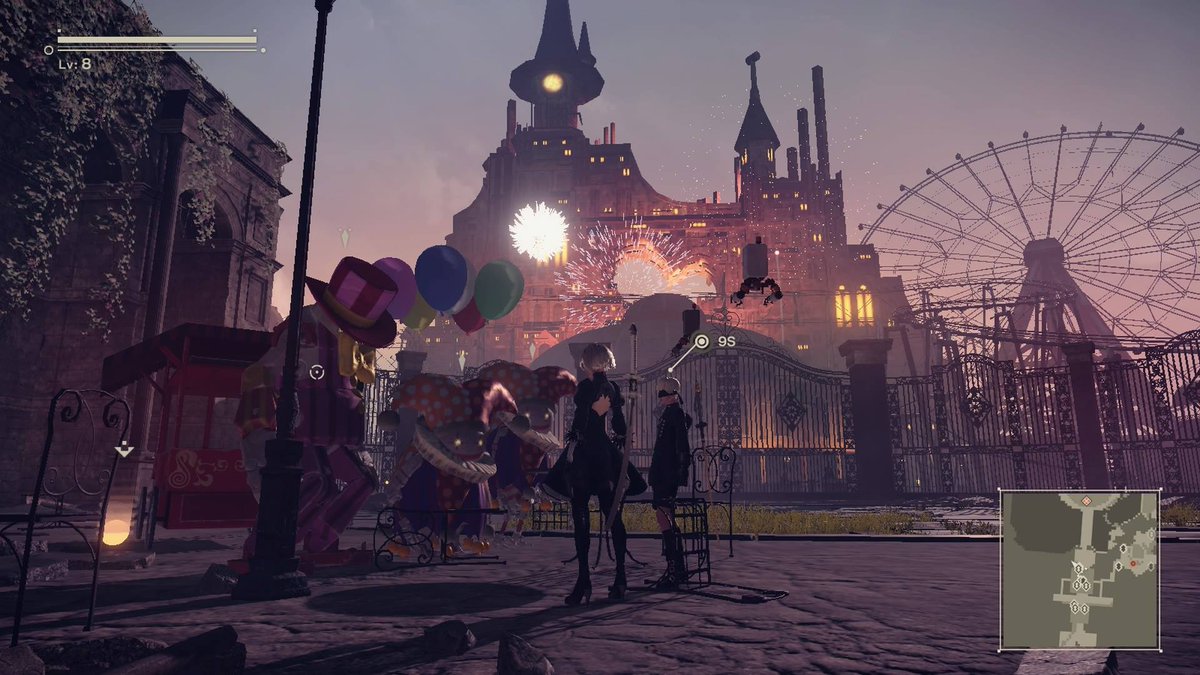
It’s difficult in some respects to talk about NieR without talking about its eccentric creative director, Yoko Taro and his history in games development. Nonetheless, I’m going to make my best attempt here to convey what it is about this game in fewer than 20,000 words.
Pre-release, Automata was discussed in what felt like hushed tones. It was evidently a sequel to NieR, a fairly poorly-received PS3 game known mostly for its rabid cult following (and maybe the fishing?). Nonetheless, the production credits named individuals with histories spanning Square Enix’s best properties. Most shocking of all, it was in collaboration with PlatinumGames, a successful japanese action game developer known for the popular Bayonetta series. When a demo dropped on PS4 months ahead of release, it gave players a taste of a character action game in true Platinum fashion: massive enemy encounters, cinematic action set pieces, and stunning character animations. The buzz around the title was palpable.
Set thousands of years after the events of NieR (which, ok, NieR is also a spin-off of the Drakengard series and… you know what nevermind), Automata felt intentionally distanced from the need to have played the first title. Invading aliens have brought humanity to the brink of extinction utilizing disposable machines in massive quantities. The final dregs of the human race have fled to the moon where they await the defeat of the machines’ alien masters so that they may return. To service this, humanoid androids have fought in the machine wars as human proxies for millenia. The android’s strongest weapon against the machines is Project YoRHa, a collection of highly powerful android operatives that are designed and manufactured for massive machine destruction. The protagonist, 2B, and her sidekick, 9S, are two such YoRHa models.
So far, so anime. And honestly, after the opening sequence from the demo, the game began to lose me. The music was haunting and beautiful, the characters and locations were all cool but I found myself rapidly losing steam. If Zelda made Horizon feel dated in the open world department, NieR:Automata felt like a PS2 game. A few of the early quests on earth involve fetching items dropped by enemies around the map and it was reminiscent of early World of Warcraft in the worst possible ways. The map, while visually nice, felt largely empty, excascerbated by the need to traverse it back and forth for hours from one quest to another. “Wow, it sure is annoying that we have to do all these monotonous tasks huh?” says 9S to 2B as I pick up the 2nd of the 4 metals screws I need.
Furthermore, one of the biggest missteps was that the combat felt too simple, too easy, and boring. I’m certainly not an expert, having not played Bayonetta, but PlatinumGames certainly had a reputation for deep and complex character action with long moves lists and complicated combos. Most of the combat in Automata could be resolved by tapping the attack button constantly while occasionally spamming the extremely forgiving dodge button to stay out of harm. The game has a clever character progression system where the player installs ability modifiers as literal computer chips onto 2B’s internal circuitboard. What’s more, vital functions that control the HUD or even the android’s own operating system are also chips on that board that can be removed (fatally, in the case of the OS chip). However, the game never seems to demand the player to use any of this. Tap attack from start to end with a light dusting of chips you find and you’re good to go. Fighting waves of enemies got tiresome and the chips system felt like wasted potential.
Finally, I was very quick to believe that I had the game’s message figured out. I can blame cynicism or maybe arrogance but after a long history across all forms of media of attempting to explore the nature of consciousness through the foil of articial intelligence, I was pretty convinced. There is an android in an early side-quest who refuses to have his leg replaced because it’s his only remaining original part and he’s worried about losing whatever it is that makes him him. Turing machines, Chinese rooms and electric sheep all equipped me to roll my eyes as far back as they could go.
I probably would have let the game go some 5 or 6 hours in, but then that familiar NieR buzz began to rev up again. Both close friends and numerous games critics I follow completed the game and viewed all of its many endings. Some of them had even been saying much of the above themselves before finishing it. But the end message was universal:
“Finish it.” They would say, “Trust me.”
What I embarked on from there was a 40-hour playthrough that would take me 8 months. I would designate a saturday afternoon to force myself to sit down with it, play a handful of hours, and then set it back down for a month or more. And I want to be clear here, I was not by any means not enjoying my time. I came to really enjoy the writing and the characters, later sequences were flush with massive and exciting action and the score was nothing short of incredible. It simply came down to being surrounded by countless incredible games throughout the year. Given the choice of running the Destiny raid with friends or trying to put myself into the mood to continue interfacing with a thing that overall wasn’t doing it for me, I rarely picked NieR.
What’s more, after “finishing” the game, you are prompted to start over, this time playing from the perspective of the sidekick character 9S. 9S added a cool new gameplay mechanic and some interesting different perspectives on the events of the first playthrough but this was probably the closest I came to giving the game up. I was still not convinced.
Now I hope that by this point of my essay on my favorite game of the year, I’ve made as loud of a case as possible about how skeptical I was. At the very least I hope I’ve complained more about NieR than I complained about Zelda.
I won’t get into the details of what happens following the second playthrough, but I’ll say that it was compelling enough to go on to finish the game entirely within the following day. My entire journey through that game, I had a complete understanding of my own tempered reaction to it. Yes, people said it was amazing. Sure, I was prepared to be impressed, or at least recognize what it was doing and respect it. What I never could have imagined was finishing “Route E” and just… sitting… in silence in my dark living room for what felt like an hour. NieR: Automata was a game whose final words I fully expected to respect and dismiss. Instead, I spent the following days and weeks unable to think about much else.
It wasn’t just that the conclusion of the game was like nothing I had seen in a game before, it utterly and profoundly justified the entire journey to it. Automata is a game that flaunts its low budget and shortcomings and then comes around to convincing you it was all necessary. Somehow, the pain and frustration and seemingly useless time spent was all necessary to understand what the story was ultimately attempting to say. After months of forcing myself through the moments of the plot, I found myself ready to urge others to push through the same.
“Finish it.” I would say, “Trust me.”
NieR:Automata is a love letter from Yoko Taro; a letter to the shut-in nerds and the generation raised on games. To steal a phrase from GiantBomb’s Alex Navarro, I have never felt more seen by a creator before. Taro told a story and built a world using the language of games as an art form. With that brush he paints a striking, convincing, and devastating portrait of humanity. Through the lens of machines desperately attempting to emulate their human predecessors, we explore the messy concepts of fear, competition, community, isolation, sexuality, and love.
In the end, it is us, we, all of us, who are attempting to emulate the humans before us. As we march onward, and shoot for higher and higher scores, we are just as directionless and broken as those funny robots.
NieR:Automata is a videogame that brought me to tears with an ending credit sequence using only color and music. It is a videogame that shook my understanding of games’ ability to tell stories and explore philosophy.
It’s difficult for me to write this, listening to the soundtrack, and not just go and start a new playthrough. It’s a game that I very much look forward to revisiting in the years to come.
In Conclusion
It’s 1:30AM on New Year’s Day. I’m mostly drunk.